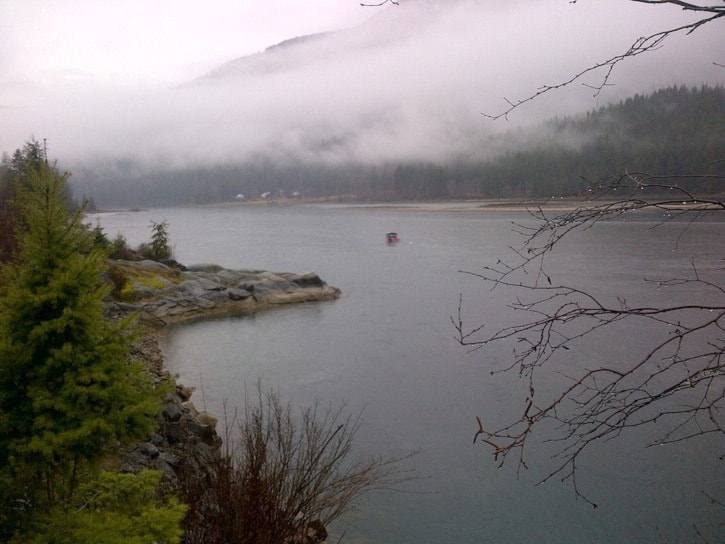BC Hydro won’t be going ahead with a proposal to deepen Grohman Narrows.
"Based on the results of studies related to the potential improvements, BC Hydro will not be proceeding to the next phase of the project," spokeswoman Mary Anne Coules said.
"When we looked at the amount of flood control the project could provide versus the cost and potential risks, there wasn't enough justification to pursue it."
Preliminary cost estimates ranged from $21 to $68 million for low to high volume excavation scenarios that could reduce peak water levels from 22 to 60 centimeters (nine inches to two feet) respectively.
Coules said they "definitely" took public feedback into account as well. The project had both supporters and detractors who voiced their views during several public meetings and in phone calls and emails, Coules said. She added there were "strong opinions" on both sides, and the feedback helped guide supplementary studies.
BC Hydro began studying the idea after high water in 2012 flooded homes and local politicians encouraged them to look at freeing up the Kootenay River bottleneck. In early 2013, BC Hydro started an engineering study to investigate the feasibility, costs, and benefits of such a project.
Coules said had the dredging been conducted prior to 2012, it would have addressed some of the problems but not enough to solve it entirely.
She said the $700,000 BC Hydro spent on studies was not a waste, despite their decision not to proceed further.
"It was important for us and the community to have a conclusive answer that this isn't the best option," she said. "It was a very interesting project and we got a good understanding of Grohman Narrows and the role it plays in flood control."
Nelson Mayor Deb Kozak said she wasn't surprised with BC Hydro's decision, although she does have concerns about the future.
"There was so much pushback from the community and a deep suspicion it was BC Hydro trying to make more money. It didn't matter what we said about how the whole thing came about, people were very leery. That's understandable. A lot of people were around when the [Columbia River Treaty] dams went in. There was some mistrust and fear around what might happen."
However, Kozak said from her perspective, those who worked on the project were genuinely interested in the pros and cons, and while the project would have resulted in some additional power generation, it was weighed against the cost of the project.
Kozak said she remains concerned that climate change will mean more big rain events, such as the ones of 2012.
"I don't know how often flood events will happen, but it would be nice to have the ability to control the water flow. We'll have to prepare for what might come down the pipe, but there is some uneasiness. I'm not so sure what's going to happen."
The Narrows was last dredged in the late 1930s.
